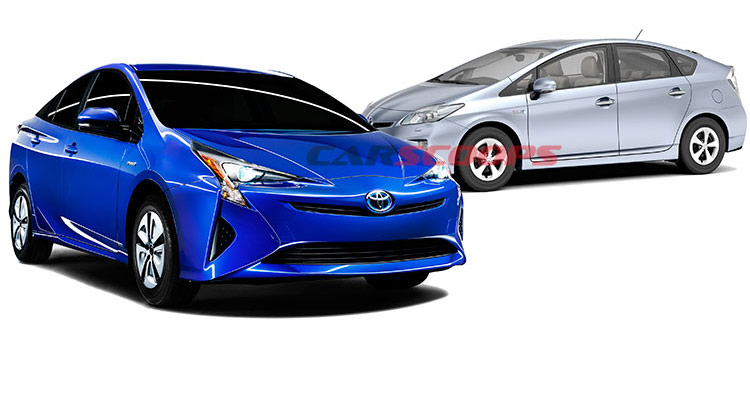And we thought the third generation Prius had the looks only a mother could love.
Hybrids have always been accused of being visually boring – especially Toyota’s products – and the new Prius is the Japanese car maker’s attempt to redeem itself and get rid of this (unfortunate) label. You brought this upon yourselves.
Anyway, “boring” might not sound as a harsh criticism, but calling a car or an automaker boring is the ultimate insult. Why? Because boring equals mediocrity and we all know nothing cool ever comes up from there. No one wants an average car and the brand new 2016 Prius tries its best to be far from average. In fact, it gruesomely sits at the other end of the spectrum.
Its overall proportions were carried over from the previous generation, since the well-known shape has an outstandingly good aerodynamic coefficient. Still, the body was submitted to a “cuts and creases” treatment, sporting multiple air-channeling design cues.
The roof may seem quite a bit slanted, but it’s not that different from the one found on the previous Prius. The blackened-out C-pillars and the fact that the new model is actually 2.4 inches longer contribute to the elongated look of the canopy. Besides, the same cues are used for visually separating the roof-line from the car’s hips, creating the effect of a “floating roof”.
This, together with the integrated rear spoiler (uniting the stoplights) form the greatest visual effect of the entire car. And guess what? The same basic principle can be found on the old model, although its narrower approach and un-masked style-nod spoil the effect. And yes, both cars have a lower-rear back window located between the spoiler and the actual trunk, which means the hatchback is composed of two separate pieces.
The taillights on the new car seem to be part of the structural integrity, holding the fake spoiler in its place and continuing to the rear quarter-panels. Actually, it seems that the entire car was built around them and not the other way around. Still, they can’t compare with the cartoonish headlights…
Coming up to the front, it’s advisable not to look straight into its “eyes” or you’ll surely turn into stone. Joking aside, the new Prius sports a much lower and raked hood line, which doesn’t quite integrate nicely with the A-pillars. The smooth flowing front-to-back design of the previous generation has gone the way of old Yeller, in favor of an arched, disproportionate A-pillar approach. No more MPV “harmony” on the new Prius, it’s all about rocking that two-box design now.
There’s not much to say about the headlights, except that they’re all over the place and offer the car an aggressive look – which no one will take serious because, c’mon, it’s a Prius. The front bumper highlights the car’s additional 0.6 inches width, sticking to a horizontal motif evolved from the previous generation. It’s kind of reminiscent of the Mirai, which is another… mess, albeit a little toned-down and poised, because driving a petrol-electric hybrid isn’t as radical as driving a hydrogen fuel-cell sedan.
The interior layout has basically remained unchanged, although modern, simple features and style cues have given it a more “premium” look; no more odd-placed air vents. Besides, the center console now offers additional room for storage and the shifter has evolved into a gear selector-thingy and merged right under the infotainment system. But that came at a price, as the cabin doesn’t cocoon the driver anymore with a space-ship inspired central command. As a matter of fact, the new, minimalist layout seems rather austere.
The quirky instrument panel is still were you’d expect, ready to provide useful information to the driver. It now rises separately from the dash, unlike the integrated one on the previous model, offering a slimmer, less-chunkier perspective of the car’s main control module.
It seems that the days of button-filled Japanese cabins are numbered, as the new Prius significantly reduced its knobs in favor of a more clean design. Mind you, the oval steering wheel will be missed too.
All in all, The new Prius transforms its “traditional” style cues in something much more striking.























